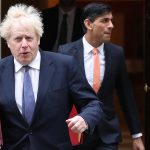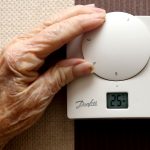The rate of inflation crept down slightly to an annual rate of 3.1% in September, according to official figures which are tipped to surge ahead in the months ahead and force the Bank of England to intervene.
The Office for National Statistics (ONS) said that rises in the cost of fuel last month, reflecting the impact of the delivery difficulties that sparked panic-buying, and wider increases across the economy were offset by falling restaurant and hotel costs as the effects of last year’s Eat Out to Help Out scheme fell away.
Economists had predicted the Consumer Prices Index (CPI) measure would remain at 3.2%.
But they warn that October’s figure is set to shoot up – driven by the 12% leap in the energy price cap at the beginning of this month and wider increases in the cost of goods and services linked to the COVID global supply chain disruption and worker shortages – the latter made worse by the government’s post-Brexit immigration rules.
Please use Chrome browser for a more accessible video player
The British Chambers of Commerce declared that the dip in the CPI figure reflected “temporary data distortions rather than the reality on the ground.”
September’s inflation figures are used to determine rises in business rates and the state pension increase for the next financial year.
After the government removed the earnings element of the so-called triple-lock guarantee, it means the basic state pension will rise by 3.1% (£4.25) from April to £141.85 per week.
Squid Game: Netflix hails ‘mind-boggling’ success of series as subscriber growth beats expectations
Supply crisis: These industries have job gaps like the HGV sector – and show no sign of bouncing back
Adverts for British Gas and Alpro almond milk in hot water for being misleading
It would have hit £149 if the earnings commitment had been retained.
The predictions of a dramatic upwards shift for living costs as price rises are passed on has already prompted a change of tune among rate-setters at the Bank of England.
While most who have spoken out still see the price picture as transitory – a consequence of economies getting back in gear following pandemic lockdowns – there is now a clear admission at the top that inflation will prove more sticky than originally thought.
Bank governor Andrew Bailey gave his strongest hint yet, at the weekend, that Bank rate was to rise from its crisis low of 0.1%, with the markets seeing a 90% chance of a token increase next month.
He told a panel discussion the monetary policy committee (MPC) would “have to act” in response to rising energy prices, as expectations of higher inflation in the longer term could have an impact on wage inflation ahead.
Any rate increase would likely to be passed on to mortgage customers who are not on fixed-rate deals.
At the same time, industry leaders are warning that the structural problems in the supply chain including the shortage of HGV drivers are forcing costs up at an alarming rate.
The head of the Food and Drink Federation told MPs on Tuesday: “In hospitality, inflation is running between 14% and 18%, which is terrifying.”
ONS Head of Prices Mike Hardie said of the latest official data: “Annual inflation fell back a little in September due to the unwinding effect of last year’s ‘Eat Out to Help Out,’ which was a factor in pushing up the rate in August.
“However, this was partially offset by most other categories, including price rises for furniture and household goods and food prices falling more slowly than this time last year.
“The costs of goods produced by factories rose again, with metals and machinery showing a notable price rise.
“Road freight costs for UK businesses also continued to rise across the summer.”
Please use Chrome browser for a more accessible video player
The ONS said transport was the main driver of inflationary pressure in the month.
It measured that average petrol prices stood at 134.9 pence per litre in September, compared with 113.3 pence per litre a year earlier.
Also within its transport measure was a marked leap in used car prices as sales of new cars are hit by production problems linked to a shortage of semiconductor chips.
The ONS noted an increase of 2.9% during the month, reporting a cumulative increase of 21.8% since April.






















